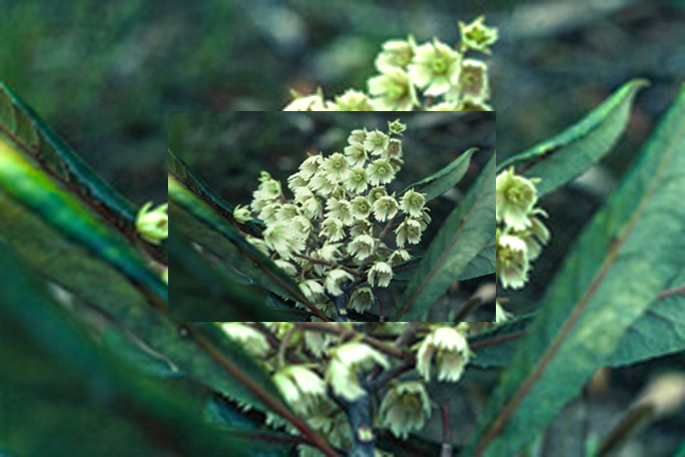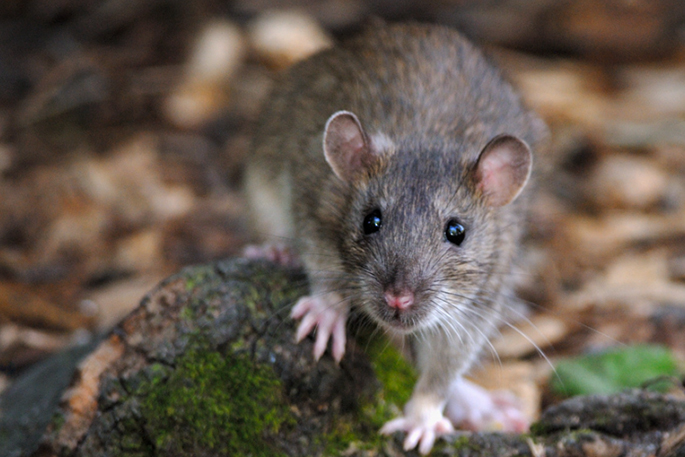Conservationists in the central North Island warn that native bird populations are due to 'take an epic hammering” this spring when predator populations balloon.
Staff of the Forest Lifeforce Restoration Trust – FLRT have seen a significant increase in rat numbers on their two properties in inland Hawke's Bay, a precursor to spikes in the number of stoats, ferrets, possums and other pest or predator species.
Rats are being detected at rates of up to 58 per cent, about twice as many as would normally be detected in August, when counts are usually conducted. This early monitoring was in response to warning signs at the back end of last year, when heavy fruiting of several plant species signalled the multi-species mast event taking place at the moment.
Peraxilla tetrapetala, or red mistletoe, was one of the species that flowered unusually early last year. It is known in te reo as pikirangi, pirirangi or roeroe. It is a parasitic shrub up to one metre tall with smooth leaves which normally only flowers around Christmas time. Numbers have increased markedly at the Trust's property in the Maungataniwha Native Forest and by early November the forest floor beneath host trees was already littered with flowers.
 Elaeocarpus dentatus, known in te reo as hinau or whinau, also flowered heavily. It is common at Maungataniwha and has plump berries during the winter which can escalate rat numbers through the colder months into Spring. This is the point at which the rats then cause carnage among native birds that are breeding.
Elaeocarpus dentatus, known in te reo as hinau or whinau, also flowered heavily. It is common at Maungataniwha and has plump berries during the winter which can escalate rat numbers through the colder months into Spring. This is the point at which the rats then cause carnage among native birds that are breeding.

Red beech was flowering about as heavily as FLRT staff have ever seen.
'The rats will have a massive effect on the populations of smaller birds such as tom-tits and robins,” says Trust staffer Barry Crene. 'Rat numbers will help drive up stoat numbers and they're going to nail heaps of kiwi and whio. The whole thing's going to be as ugly as we've seen it in a very long time.”
Barry says there is little that conservationists could do except 'take the hit” and make preparations for increased trapping and other predator and pest control work.
Masting is a natural event that happens every three to five years. A tree species will produce more seeds than usual. It's an effective species survival mechanism because predators will not be able to consume all the seeds. Ironically though, it leads to a boost in predator numbers.
This year the Trust has seen several species mast simultaneously.
'I have no doubt that this mega-mast event will have a detrimental impact on the population numbers of pretty much all our native species,” says Barry. 'We've been tracking really well in recent years but this definitely feels like a ‘three steps forward, one step back” type of situation.
The Forest Lifeforce Restoration (FLR) Trust was established in 2006 to provide direction and funding for the restoration of threatened species of fauna and flora, and to restore the ngahere mauri or forest lifeforce in native forests within the Central North Island.
It runs eight main regeneration and restoration projects, involving native New Zealand flora and fauna, on three properties in the central North Island. It also owns a property in the South Island's Fiordland National Park.
The FLTR is fast carving out a name for itself as one of the most prolific and successful kiwi conservation initiatives in the country.
In addition to the Maungataniwha Kiwi Project the Trust runs a series of native flora and fauna regeneration projects. These include a drive to increase the wild-grown population of Kakabeak, an extremely rare type of shrub, and the re-establishment of native plants and forest on 4,000 hectares currently, or until recently, under pine.



0 comments
Leave a Comment
You must be logged in to make a comment.